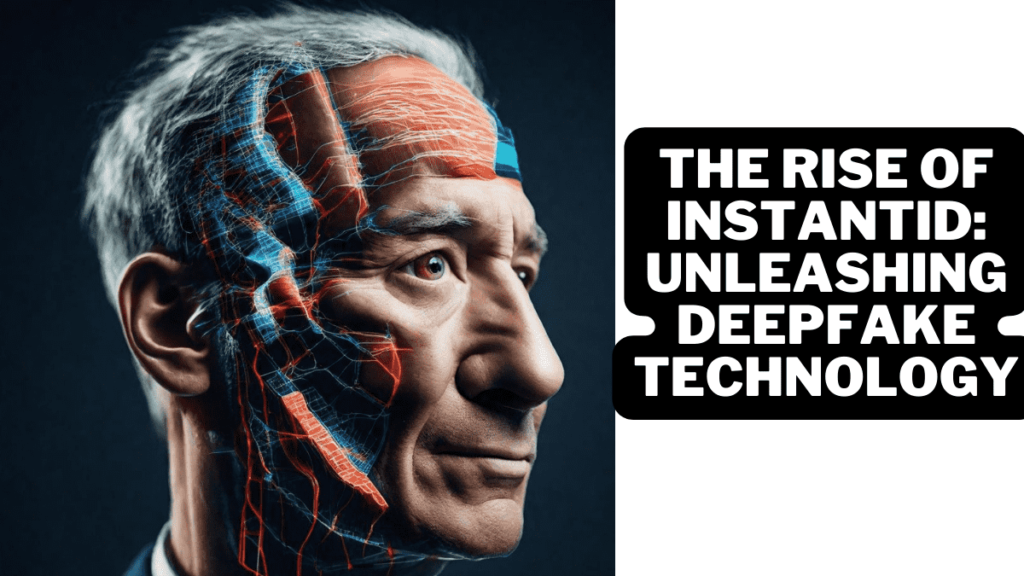in this year deepfake technology is more advanced than in past years.in the past year, we have had some signals to identify the deepfake video but this time we have not identified the video are audio AI makes it more efficient. In the realm of artificial intelligence, the emergence of groundbreaking technologies continues to shape the future. One such innovation is InstantID, a revolutionary AI image generation method unveiled by the InstantX team in Beijing. While hailed as a new state-of-the-art development, concerns have been raised about its potential impact on the proliferation of deepfake audio, images, and videos, particularly in the context of the upcoming 2024 election.
Table of Contents
InstantID: A Swift Recognition and Generation Marvel
InstantID stands out as a cutting-edge solution that swiftly recognizes individuals and generates new images based on a single reference image. This remarkable capability, as outlined in the InstantX team’s paper titled “InstantID: Zero-shot Identity-Preserving Generation in Seconds,” sets a new standard in AI image generation.
Reuven Cohen, an enterprise AI consultant for Fortune 500 companies, lauds InstantID as a game-changer. He describes it as a tool that surpasses LoRA, a model known for its small, fine-tuned parameters. InstantID’s efficiency lies in its ability to generate identity-preserving content without the need for extensive training or fine-tuning, requiring minimal GPU and CPU resources.
InstantID vs. LoRA: The Deepfake Technology Revolution
Cohen’s comparison of InstantID with LoRA highlights the former as “deep fakes on steroids.” While LoRA enthusiasts have utilized small, fine-tuned models for various creative outputs, InstantID takes the lead by offering a ‘plug-and-play module.’ This module adeptly handles image personalization using just a single facial image, ensuring high fidelity without the storage demands and lengthy fine-tuning processes associated with LoRA.
Zero-shot Identity-Preserving Generation: A Paradigm Shift
InstantID introduces a paradigm shift in AI image generation with its focus on zero-shot identity-preserving generation. Unlike QLoRA, which extends the LoRA approach through model simplification, InstantID excels at generating outputs that preserve identity characteristics in a fast and efficient manner. Cohen emphasizes the significance of InstantID in maintaining consistency in the identity of an individual, citing examples like Donald Trump consistently looking like himself.
The Concerns Surrounding InstantID
Despite its groundbreaking features, concerns have been raised about InstantID’s potential misuse. Cohen warns that the ease of deploying InstantID for deepfake creation could lead to a flood of highly realistic and convincing deepfakes. The one-click deployment on platforms like Hugging Face raises alarms about the accessibility of this technology and its potential impact on the 2024 election.
Conclusion: Navigating the Deepfake Tech
As InstantID takes center stage in AI image generation, the ethical considerations surrounding its use cannot be ignored. While its technological prowess is commendable, the potential for misuse underscores the need for stringent regulations and ethical frameworks. As we navigate the uncharted territory of deepfake technology, responsible deployment, and vigilant oversight become imperative to prevent unintended consequences.
How does deepfake technology work?
Deepfake tech utilizes neural networks to analyze and manipulate existing media content. By training on large datasets, the AI model can generate new content by mimicking the style and characteristics of the input data.
What are the primary applications of deepfake technology?
Deepfake tech has various applications, including entertainment, filmmaking, and marketing. However, it has gained notoriety for its potential misuse in creating deceptive content, such as fake news, misinformation, and unauthorized impersonations.
